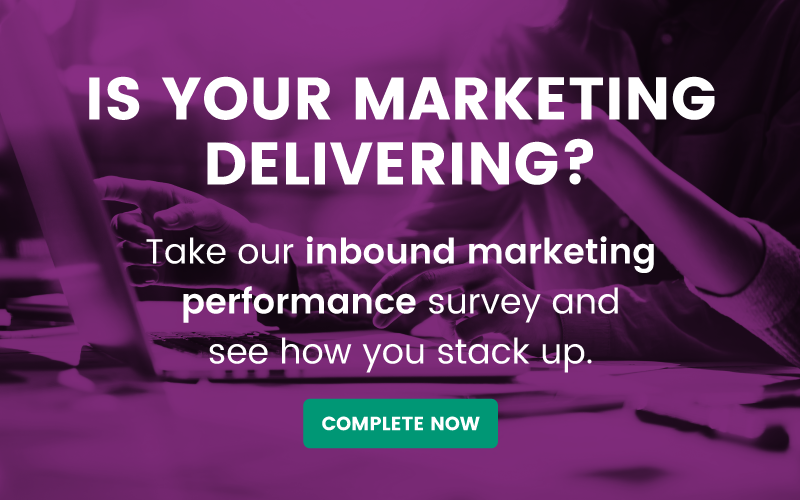I’ve found a number of articles entitled things like “inbound vs SEO” and talking about how they’re different. But I don’t think this quite right. Because they very closely related. In fact I believe that they are not mutually exclusive. Here’s the thing: if you’re not doing SEO, then you’re not doing inbound properly. And you’re not doing inbound marketing, then you’re not really nailing SEO.
What does this mean?
I’ve started off this article by making something relatively simple sound quite complex. So let’s break inbound marketing and SEO down. The way I see it, inbound marketing is an overarching strategy or an ethos. It’s a decision to focus on attracting people to you and your business rather than actively seeking them out (outbound marketing). To execute an inbound strategy, you’ll need to use many tactics and digital marketing practices. These include content generation, marketing automation, conversion rate optimisation, user experience design, and SEO. SEO is one of the many strings to the inbound bow. But as you’ll see throughout this article, it’s a pretty integral one.
What does SEO involve?
The clue’s in the name – SEO is the practice of optimising your site for search engines. Traditionally, this has meant using certain techniques to manipulate search engine crawler bots and influence them into ranking you higher for keywords relevant to your business and its products and/or services. In 2017, it’s about so much more than that. With nearly 80% of the global search market, Google is by far the most popular search engine. And it’s getting smarter by the second.
Google is making huge progress in semantic search – being able to understand user intent – through their Knowledge Graph. Their algorithm uses certain clues to identify what information the user wants, and determines which results – and which types of results – will be most relevant and helpful.
For example, if you search for a question, like “What is inbound marketing?”, Google uses its algorithm to find the best answer to this question, and displays the results in a featured box like this.
There are millions of reasons why this particular page might be appearing here for this question in particular which I won’t go into now – Google uses at least 200 ranking factors when displaying search results – but to help you understand the relationship between good SEO and good inbound marketing practice, here are a couple of factors that could be helping it.
It ticks the user intent box
The sentence “Inbound marketing is the process..” directly answers the question “what is inbound marketing?”. They’ve even included the word “definition” for good measure. This little snippet appears right at the the top of the landing page and is a nice succinct little paragraph which perfectly sums up inbound marketing.
The page is optimised
The landing page this links to is perfectly optimised for the keyword “inbound marketing” – it uses the word 20 times, at a keyword density of 3.9% – which is just right, letting Google know this page is definitely about inbound marketing, without looking too spammy. Semantically linked keywords like “content marketing” and “lead generation” are also used – this not only increases the relevancy of the page with the core search term “what is inbound marketing”, it also gives them the opportunity to rank for other closely related terms too. The page also uses “what is inbound marketing” as its H1 (page heading) – which tells both the user and Google they’ve found what they’re looking for.
It’s had a bit of love in the past
Outside of the featured snippet, this website ranks at number 3 for this keyword, which means it’s enjoyed quite a lot of exposure before being featured. Since it’s a helpful, informative and engaging page which gives the user all the information they’d want to answer the question “what is inbound marketing?” – using a great mix of copy, diagrams, video and images – then you’d have to assume a user that’s landed on this page has stuck around to have a read through. Click-through-rate (the percentage of clicks the result gets based on the number of searches for that term) and bounce rate are massive ranking factors, so combining good exposure (meaning more clicks) with engaging content (meaning lower bounce rates) makes for a pretty successful page in Google’s eyes.
There is another important element I haven’t touched on here which inbound links – which in an inbound lens relates to content promotion. This is a whole other level of analysis which I don’t want to get into too much detail on here, and I also am a very strong believer that building links to or promoting content (also known as off-site SEO) which doesn’t tick the on-site SEO boxes – some of the techniques mentioned above – is a bit like flogging a dead horse.
It all fits together
I hope you’re beginning to see now that there’s a strong link between what is considered good SEO practice and good inbound practice. Both essentially have content at the core – relevant, well-written content that’s really helpful to your potential customer. Looking at your inbound content through an SEO lens just provides you with those few extra steps to really give your page or blog post the chance to top the search results. Techniques like keyword optimisation, semantic keyword optimisation, interlinking, and the use of H1s and meta titles and descriptions can mean the difference between page 2 and page 1.



